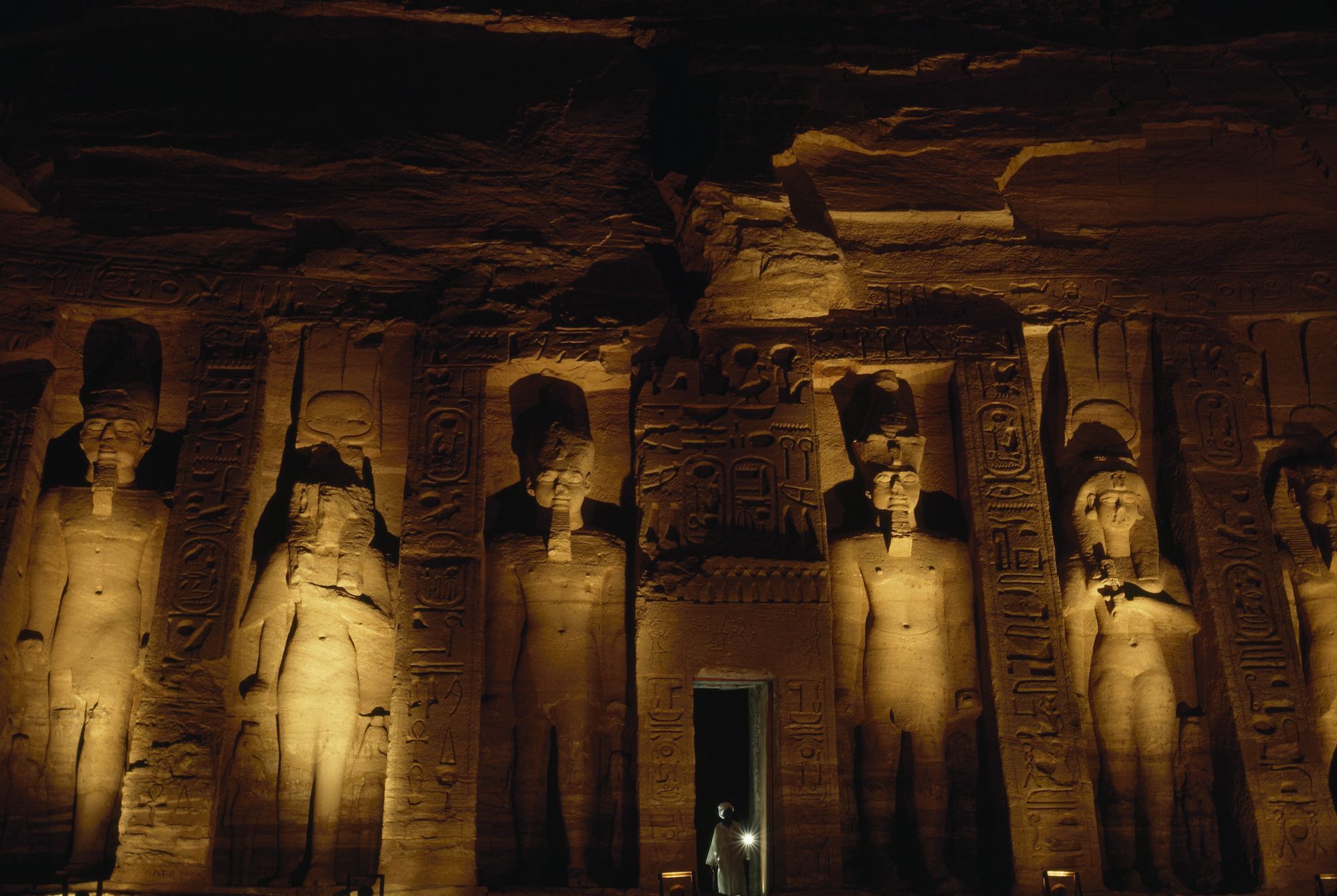In a Mode That Again Becomes Conventionalã¢â‚¬â€pharaoh Is Regularly Referred to as Strong Bull
Pharaohs
Pharaohs
Pharaohs were the heads of state and religious leaders of ancient Egypt.
Subjects
Anthropology, Archaeology, Social Studies, Aboriginal Civilizations
Paradigm
Temple of Nefertiti
Ancient Egyptians carved giant statues of Ramesses II and Nefertiti at the Temple of Nefertiti in Abu Simbel, Arab republic of egypt.
Photograph by Thomas J. Abercrombie

As ancient Egyptian rulers, pharaohs were both the heads of state and the religious leaders of their people. The word "pharaoh" means "Swell Business firm," a reference to the palace where the pharaoh resides. While early Egyptian rulers were chosen "kings," over fourth dimension, the name "pharaoh" stuck. Equally the religious leader of the Egyptians, the pharaoh was considered the divine intermediary betwixt the gods and Egyptians. Maintaining religious harmony and participating in ceremonies were part of the pharaoh's role as head of the religion. As a statesman, the pharaoh fabricated laws, waged war, collected taxes, and oversaw all the state in Egypt (which was owned by the pharaoh). Many scholars believe the outset pharaoh was Narmer, also called Menes. Though there is some debate amongst experts, many believe he was the first ruler to unite upper and lower Arab republic of egypt (this is why pharaohs agree the title of "lord of two lands"). Pharaohs were typically male person, although in that location were some noteworthy female person leaders, like Hatshepsut and Cleopatra. Hatshepsut, in particular, was a successful ruler, but many inscriptions and monuments about her were destroyed later her death—perhaps to stop time to come women from becoming pharaohs. Afterwards their deaths, many pharaohs were entombed and surrounded by riches they were meant to utilize in the afterlife. Explorers and archaeologists have discovered these tombs and learned a great deal about ancient Egyptian guild from them. I very famous instance was in 1922 when archaeologist Howard Carter discovered the tomb of Male monarch Tutankhamen, a pharaoh who died when he was only nineteen.

Ancient Egyptians carved giant statues of Ramesses II and Nefertiti at the Temple of Nefertiti in Abu Simbel, Egypt.
Photo past Thomas J. Abercrombie
afterlife
Noun
being post-obit decease.
archaeologist
Noun
person who studies artifacts and lifestyles of ancient cultures.
Cleopatra
Noun
(69-30 BCE) queen and last reigning pharaoh of ancient Egypt.
divine
Adjective
having to practice with a god.
entomb
Verb
place in a tomb, bury
harmony
Substantive
agreement or complementary clan of several parts.
Hatshepsut
Noun
(~1495-1458 BCE) Egyptian pharaoh.
inscription
Noun
record that has been cut, impressed, painted, or written on a hard surface.
intermediary
Noun
person or organization that serves as a mediator or go-betwixt for two other people or organizations.
Noun
ruler of ancient Egypt.
scholar
Noun
educated person.
statesmen
Noun
political figure
Tutankhamun
Noun
(1341-1323 BCE) Egyptian pharaoh.
Source: https://www.nationalgeographic.org/encyclopedia/pharaohs/
0 Response to "In a Mode That Again Becomes Conventionalã¢â‚¬â€pharaoh Is Regularly Referred to as Strong Bull"
Post a Comment